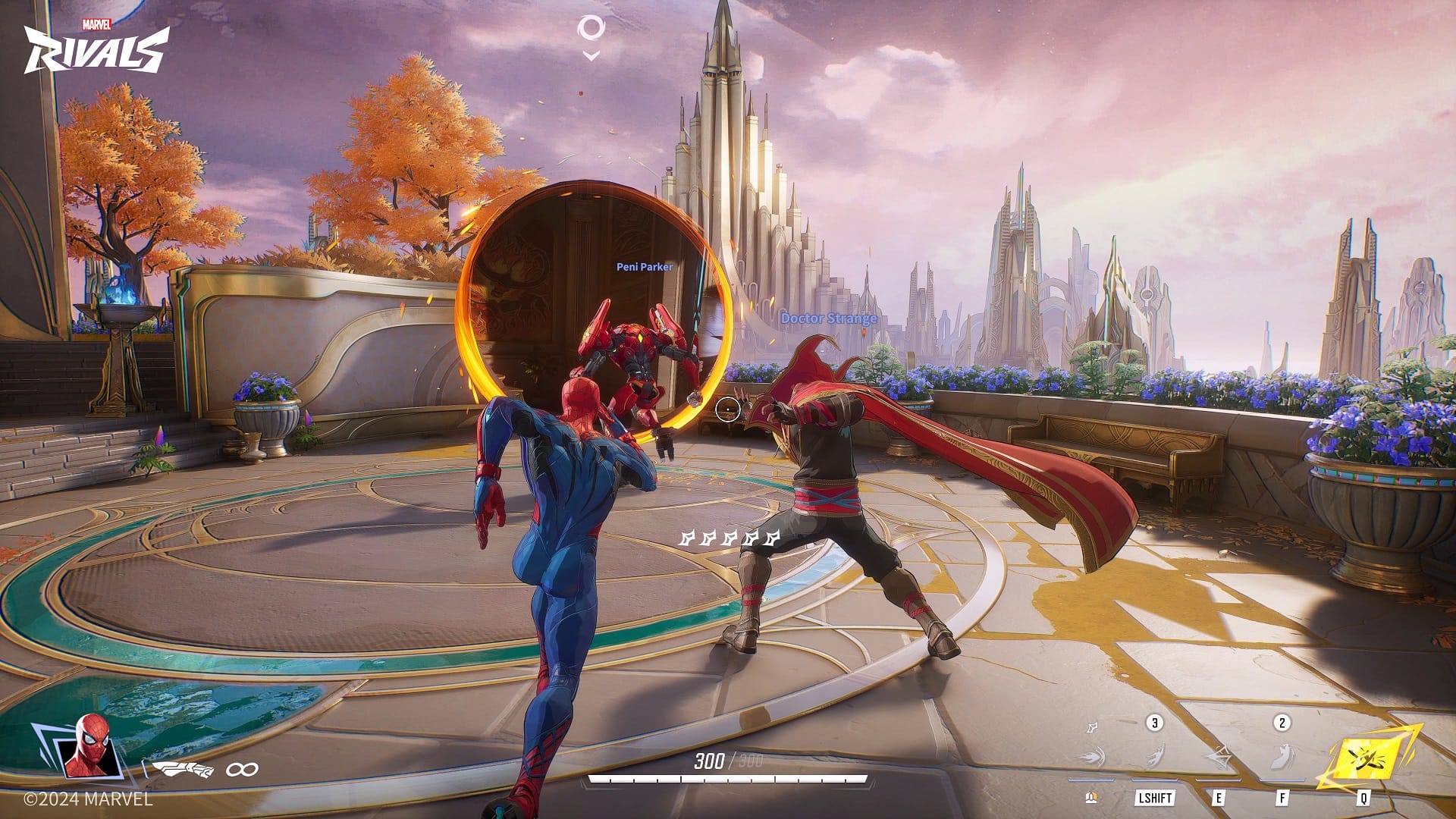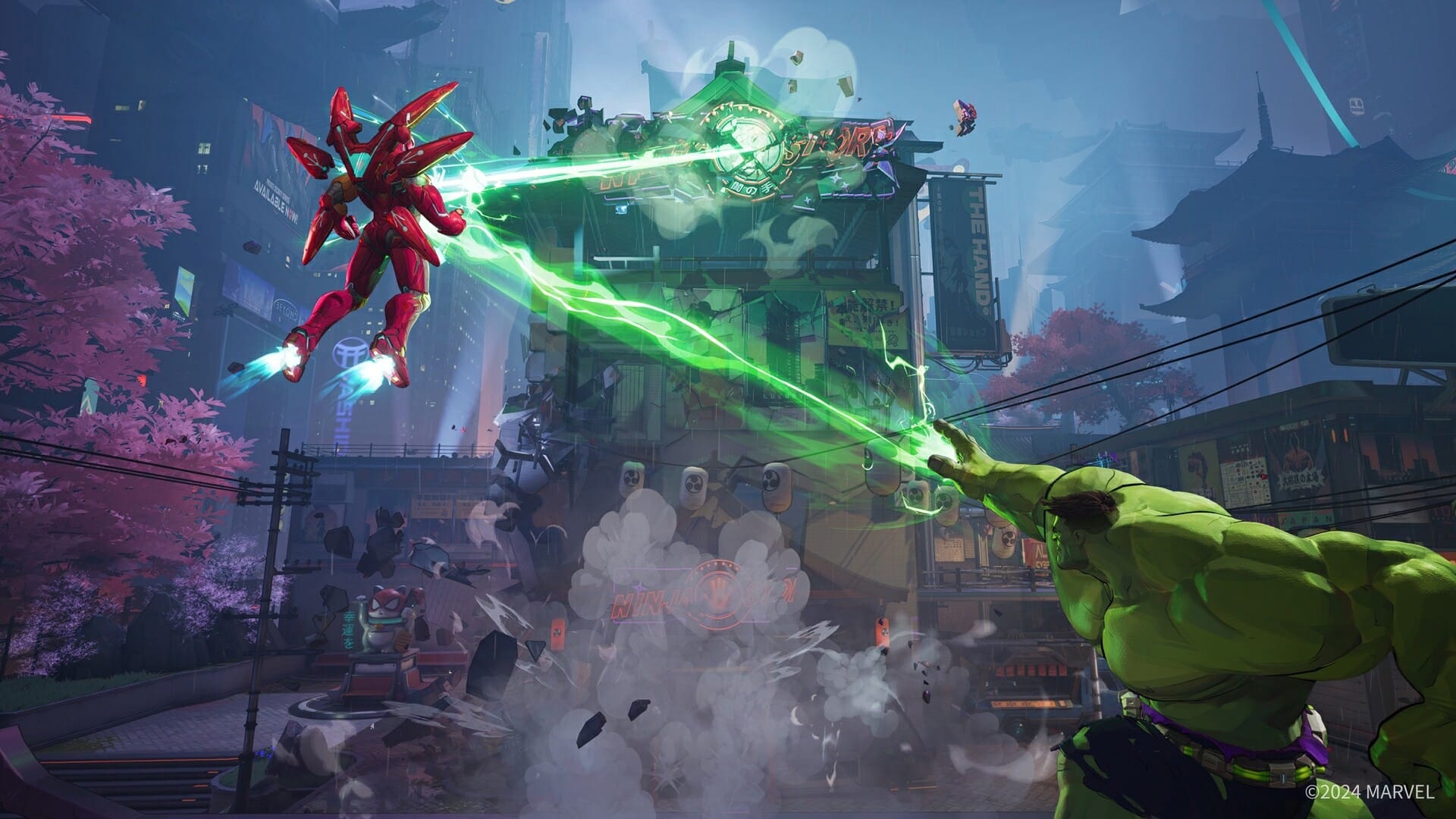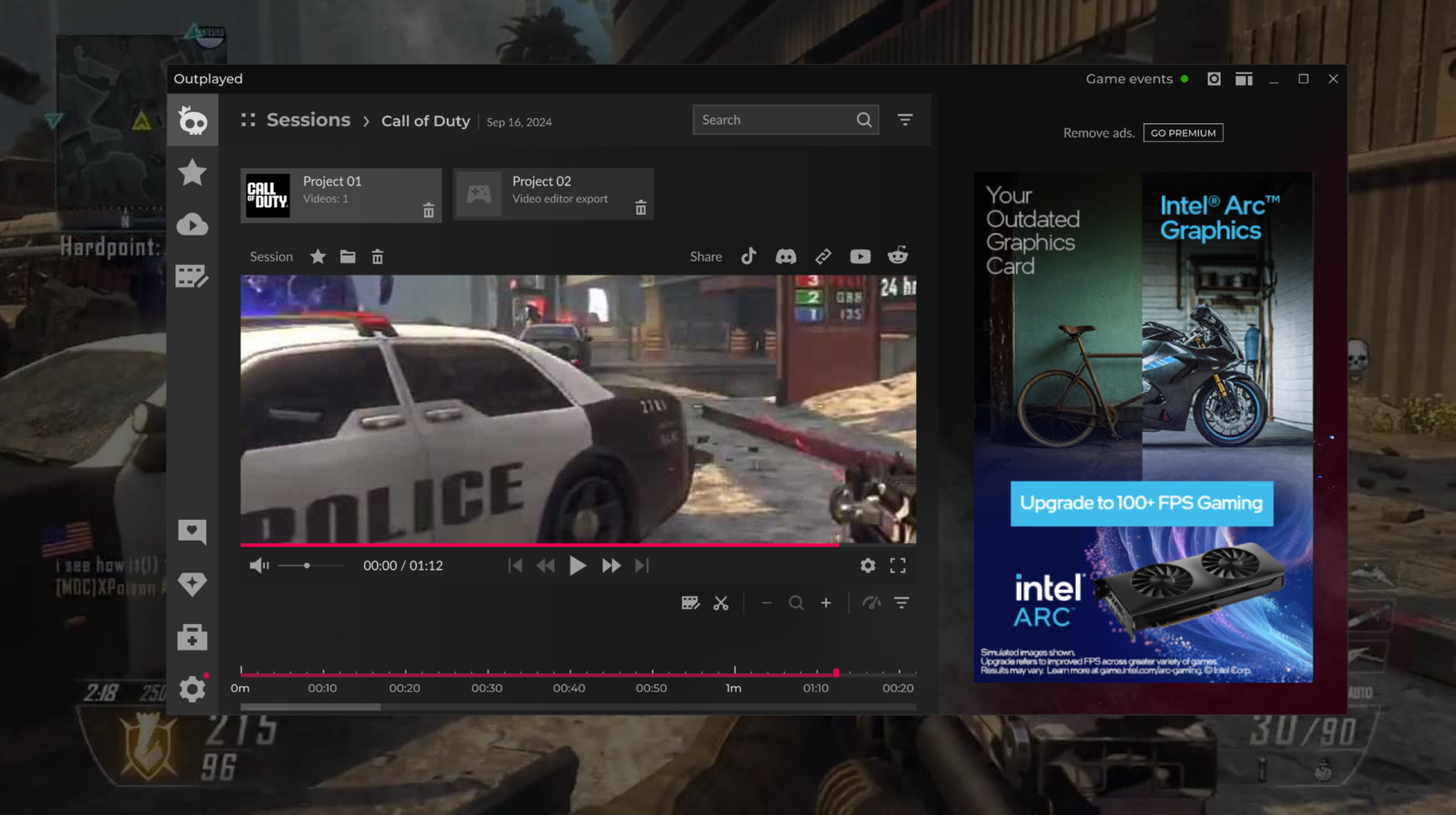
For advertisers, understanding the appeal of a new game—and why it matters—can be a challenge. With countless titles launching each year, it’s difficult to predict which ones will capture players’ attention and foster long-term engagement. Even more daunting is envisioning how a brand can seamlessly fit into these digital spaces without disrupting the experience. Yet, when a game resonates deeply with its audience, it creates an ecosystem where advertising isn’t just tolerated—it can become an organic part of the culture.
So for the recently launched AAA gaming sensation Marvel Rivals, let’s bring it to life. It’s Friday night and a group of friends are huddled together; strategising, reacting, and celebrating as they play. One friend, Jake, takes on the role of Iron Man, soaring through the air to unleash a precision missile barrage, while his teammate Sarah, controlling Captain America, sets up a game-changing shield throw. The match concludes with a dramatic victory, secured through a perfectly executed “team-up” move—a mechanic that brings Marvel’s iconic hero synergies to life. The excitement is contagious, and the squad queues up for another round.
This scene isn’t unique. Data shows that players worldwide are averaging 93-minute sessions and nearly 12 play sessions over a 30-day period. This level of engagement isn’t just participation—it’s passion.

Now, imagine an in-game app appearing on Jake’s screen—one of the many tools powered by Overwolf that enhance gameplay, such as a real-time performance tracker that gives you stats and tips whilst you play. As he reviews his stats, an ad seamlessly integrates into the interface of the in-game app. But it’s not just any ad—it’s a targeted promotion of a fast-food delivery service utilising the native messaging that is unique to the game, triggered in a contextual way that relates to a specific moment in-game (e.g. a new team achievement or level unlocked).
The timing is perfect and it catches the eyes of Jake who excitedly announces it to his friends. Within seconds, the brand isn’t just visible—it’s part of the conversation, blending naturally into the gaming experience rather than disrupting it.
This is the opportunity that Overwolf Ads presents to advertisers more generally—quick and cost-efficient access to the biggest games in an environment where traditional advertising literally can’t get in. So why Marvel Rivals? Let’s dig in.

Key Takeaways
Marvel Rivals has taken the gaming world by storm, achieving remarkable success in its initial months. Here’s why it matters for advertisers:
- Over 40 million players joined in the first two months, outpacing genre giants like Overwatch 2 (35 million in its first month) and Valorant (14 million in its first year), with an estimated $136 million in revenue, landing it in the top five of global game revenue charts by January 2025.
- Players are deeply engaged, averaging 93 minutes per session and logging nearly 12 sessions per month, according to Overwolf platform data, demonstrating a strong commitment to the game.
- The audience is a prime target for tech and entertainment brands, with nearly 40% ranking gaming hardware as their top interest and 27% prioritizing entertainment media, per Overwolf’s survey.
- The game’s casual-friendly design and Marvel IP drive broad appeal, with “I’m a big Marvel fan” cited as the number-one reason players tried the game, setting it apart from competitive-focused titles.

Demographics and Spending Habits
The player base aligns with the typical demographics of competitive shooter games, primarily young adults, but the strength of the Marvel brand may attract a more diverse audience, potentially including a higher proportion of female players, similar to trends observed in Valorant, where 30% to 40% of players are female. From an advertising perspective, Marvel Rivals players present a compelling opportunity, showing a strong affinity for technology and pop culture, aligning with the appeal of the Marvel universe.
Here’s what the data reveals about their interests and habits:
- Nearly 40% identify gaming hardware as a primary interest, while 27% prioritize entertainment media, suggesting campaigns tied to tech and streaming content will resonate most.
- 58% have already made in-game purchases, indicating a strong proclivity to spend money online with access to disposable come (spenders sitting in the $1 to $50 range).
This pattern of a large player base with moderate individual spending is consistent with industry norms for free-to-play games, and it aligns with the game’s early revenue success, creating untapped potential for advertisers to drive engagement through promotions and in-game item offerings.

Engagement Metrics and Advertising Challenges
Marvel Rivals has achieved exceptional engagement metrics since its launch, capturing and holding player attention in ways that make it a cultural phenomenon. Consider these stats:
- Peak concurrent player counts hit over 480,000 on Steam, with around 400,000 regularly weeks after launch, indicating strong retention.
- Twitch viewership ranks it among the top three most-watched games of 2025, alongside giants like Counter-Strike and Valorant, peaking near 200,000 concurrent viewers during launch events.
Social dynamics fuel this success, with the free-to-play model and cross-platform availability encouraging friends to play together. But here’s where things get tricky for advertisers. Traditional in-game advertising, think billboards in a racing game or product placements in a virtual city, doesn’t work for a game like Marvel Rivals. The game’s fast-paced, team-based nature means players are hyper-focused on the action, not on static ads in the background.
Moreover, Marvel Rivals’ community is protective of its experience, and for good reason. The game’s success hinges on its ability to deliver fun without frustration, a balance that’s easily disrupted by intrusive ads. Industry trends bear this out: players in free-to-play games, especially in competitive genres, are notoriously skeptical of anything that feels like a cash grab. A poorly executed ad campaign could alienate this audience, turning a golden opportunity into a PR nightmare.

Harnessing Overwolf Ads to Reach Marvel Rivals Players
Ranking #2 of Comscore’s US Gaming Properties and awarded by Digiday as Best Adtech for Gaming 2024, Overwolf is the most innovative platform globally for reaching gamers during playtime, and it’s uniquely positioned to unlock the advertising potential of Marvel Rivals.
At its core, Overwolf is a platform that empowers creators to build apps, mods, and overlays that enhance PC games, offering players everything from performance trackers to custom content, all without requiring direct integration from the game’s developers. These apps run alongside games like Marvel Rivals, providing valuable services, such as in-game guides, stats trackers, or community tools, without interrupting gameplay in a brand-safe environment.
With over 100M monthly gamers using our owned-and-operated app platform across 100s of the biggest games, we can target specific players of a specific game at scale in a seamless way that can only otherwise be achieved by going direct to the game studios themselves.
Conclusion
If you’re an advertiser looking to reach a young, engaged, and notoriously hard-to-reach audience, Marvel Rivals is certainly a game you should be considering in 2025. Its massive scale, passionate community, and cultural resonance, fueled by the Marvel IP, make it a marketer’s dream to play inside.
If you are interested in unlocking its potential right now, reach out to our sales team who can help you get started here.
To see a full list of our brand case studies head here.
Overwolf Ads is a world-leading ad tech platform empowering brands and advertisers to reach over 100M+ monthly gamers across hundreds of the world's biggest titles and premium gaming websites.
We’re trusted by global brands and agencies such as P&G, Dr Pepper, AMD, Monster Energy, Nissan, KFC, WPP, Dentsu, Havas and more. Interested? Learn about us here.